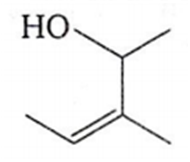 Multiple Choice Questions
Multiple Choice QuestionsWhich of the following is a wrong statement ? In a given period of the Periodic Table, the s-block element has, in general, a higher value of
electronegativity
atomic radius
ionisation energy
electron affinity
B.
atomic radius
Electronegativity, ionisation energy and electron affinity of s-block elements in their respective period is low but the atomic radius of the s-block elements is larger in their respective period due to less effective nuclear charge.
What is the H of the reaction?
CH2Cl2 (g) C (g) + 2H (g) + 2Cl (g)
The average bond energies of C-Cl bond and C-H bond are 416 kJ and 325 kJ mol-1 respectively.
1482 kJ
1482 J
1492 kJ
1492 J
The bond length of HCl bond is 2.29 x 10-10 m. The percentage ionic character of HCl, if measured dipole moment is 6.226 x 10-30 C- m, is
8%
20%
17%
50%
The only o p-directing group which is deactivating in nature is
-NH2
-OH
-X(halogens)
-R(alkyl groupd)
The IUPAC name of the following compound is

1, 2-dimethyl-2-butenol
3-methylpent-3-en-2-ol
3, 4-dimethyl-2-buten-4-ol
None of the above
